 In the web world I reasonably qualify for the title of “developer” as I spend most of my work day writing server- or client-side code. In the iOS world I nominally qualify as a “developer” in that I have paid the $99 fee to join Apple’s iOS developer program, although I have yet to do anything with it besides download early betas of iOS 5 that I never even bothered to install because I don’t have an extra device to experiment with. But in the Mac world, I am nothing more than a “power user” at best. Aside from a couple of Automator scripts (which do not count), I’ve never created a Mac application and doubt I ever will.
In the web world I reasonably qualify for the title of “developer” as I spend most of my work day writing server- or client-side code. In the iOS world I nominally qualify as a “developer” in that I have paid the $99 fee to join Apple’s iOS developer program, although I have yet to do anything with it besides download early betas of iOS 5 that I never even bothered to install because I don’t have an extra device to experiment with. But in the Mac world, I am nothing more than a “power user” at best. Aside from a couple of Automator scripts (which do not count), I’ve never created a Mac application and doubt I ever will.
Therefore I’ve kept a healthy distance from Mac app developers’ criticisms of the ongoing “iOS-ification” of the Mac, specifically where the Mac App Store is concerned. I don’t use most of the iOS-like features in Mac OS X Lion, and probably won’t in Mountain Lion either, but I do use the Mac App Store, occasionally. I think it works pretty well. It’s actually gotten me to buy some apps — games mostly (of course), plus a couple of utilities like Space Gremlin (yes, that’s a utility, not a game) — for the Mac that I probably would neither have known about nor bothered to pay money for otherwise.
But there are some things that, as a power user, I recognize as problems with the Mac App Store, specifically concerning the “sandboxing” requirement that will take effect on March 1. Essentially, in order to be carried in the Mac App Store, an app cannot access the Mac’s file system except in very limited ways dictated by the OS. It’s a huge step towards making the Mac behave like iOS, which is mainly beneficial in two ways: it improves security by reining in potentially malicious applications, and it simplifies the user experience for novice computer users in a tried-and-true way.
It may be reasonable to question at least one, if not both, of those benefits however. Regarding the latter, I suspect that most would-be Mac owners who have too much difficulty understanding the Mac interface, and who would be better served by making the Mac more iOS-like, would really be better served by not buying a Mac at all, and just getting an iPad instead. Since Apple sold more iOS devices last year than all of the Macs it has sold, ever, that seems like a no-brainer. For a large and growing majority of its customers, Apple is the company that makes iPhones and iPads, not the company that makes Macs.
But it’s the former issue — the security-enhancing measure known as “sandboxing” — that is more troublesome for established Mac users like me. A lot of Mac apps need unfettered access to the file system to do what they do. Especially for those of us “power users” who write code — for the web or otherwise — we need applications that not only have full access to the file system, but that can even let us see “invisible” files. (I always have Mac OS X set to show invisible files, since I frequently need to work with .htaccess files, for instance. Did you know that any filename that begins with a period is automatically hidden by the OS by default? It’s an old Unix thing, designed to help keep users from accidentally deleting critical system files.)
A real Mac app developer has weighed in on the problems posed by the sandboxing requirement for his company’s app, SourceTree, and how, as a result, Atlassian has had to remove SourceTree from the Mac App Store.
Fortunately, unlike with iOS, the Mac App Store is not the only way to get applications onto your Mac, and I think it’s a reasonable assumption (but by no means guaranteed) that the Mac will always allow power users to do things the “old fashioned way” and install directly applications that do not conform to the App Store’s strict requirements.
But a look at the features of the upcoming Mountain Lion version of OS X gives pause. Clearly Apple wants to move the Mac more and more in an iOS direction, and clearly even beyond the growing sibling relationship between the two platforms, just on the Mac itself, Apple is putting a lot of effort into streamlining and simplifying things, making things on the Mac work, as Grubes said yesterday, “closer to how things should be rather than simply how they always have been.”
But how things “should” be is subjective, especially when it comes to what “real” applications on a “real” computer can reasonbly be expected by “power users” to be “able” to “do.” (Quotation marks indicate uncertainty.)
There’s been a lot of talk over the past few years about how we’re entering into a “post-PC” era. With the proliferation of smartphones and tablets (90-some percent of the latter being iPads, of course), new interaction methods and increasingly mobile-first web experiences, what is to become of the trusty old PC (Mac or Windows)? What surprises me most in all of this is that Apple and Microsoft are leading the charge to turn traditional computers into post-PC devices. Both Mac OS X Mountain Lion and Windows 8 are radically diverging from their traditional interfaces into new directions inspired by their mobile siblings.
In some ways this is an exciting and fascinating time. For about two decades now, Mac OS and Windows have been very similar, presenting nearly identical ways of interacting with computers. But iOS and Windows Phone (which is coming to Windows 8 as the Metro interface) are very different from each other. The next standard UI has not yet been established. We haven’t seen this kind of competition and variety since the early 1980s, before Microsoft’s desktop OS dominance was established.
But it’s not the early 1980s. We’re not living in a time of unprecedented invention and discovery. We have nearly 30 years of GUI-based computing experience under our collective belts, and the conventions of standard GUI interfaces (as represented mainly by Windows and Mac OS X) have become expectations of the “power users” who rely on them not just as an alternative form of entertainment while sitting on the couch in the evening, but to do real work — creative, technical, business-oriented work.
That’s not going to change overnight as February passes into March. And it may not change significantly in our lifetimes. But if Apple aggressively restricts what applications in the Mac App Store can do, in ways that prevents users from getting work done, while simultaneously pushing the Mac App Store as the primary (and eventually only) way to install applications on a Mac, they will effectively kill the Mac as a tool of creative professionals, which is pretty much the only thing that kept Apple alive through the ’90s in the first place. Sure, Apple doesn’t really need us now (and it would still have us anyway… I’m not giving up my iPhone anytime soon), but making the Mac too much like iOS doesn’t necessarily make it better. It just makes it… unnecessary.

 In the web world I reasonably qualify for the title of “developer” as I spend most of my work day writing server- or client-side code. In the iOS world I nominally qualify as a “developer” in that I have paid the $99 fee to join Apple’s iOS developer program, although I have yet to do anything with it besides download early betas of iOS 5 that I never even bothered to install because I don’t have an extra device to experiment with. But in the Mac world, I am nothing more than a “power user” at best. Aside from a couple of Automator scripts (which do not count), I’ve never created a Mac application and doubt I ever will.
In the web world I reasonably qualify for the title of “developer” as I spend most of my work day writing server- or client-side code. In the iOS world I nominally qualify as a “developer” in that I have paid the $99 fee to join Apple’s iOS developer program, although I have yet to do anything with it besides download early betas of iOS 5 that I never even bothered to install because I don’t have an extra device to experiment with. But in the Mac world, I am nothing more than a “power user” at best. Aside from a couple of Automator scripts (which do not count), I’ve never created a Mac application and doubt I ever will.
